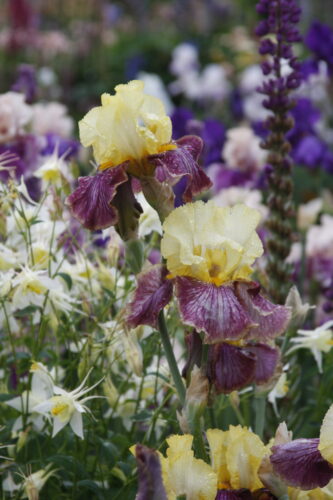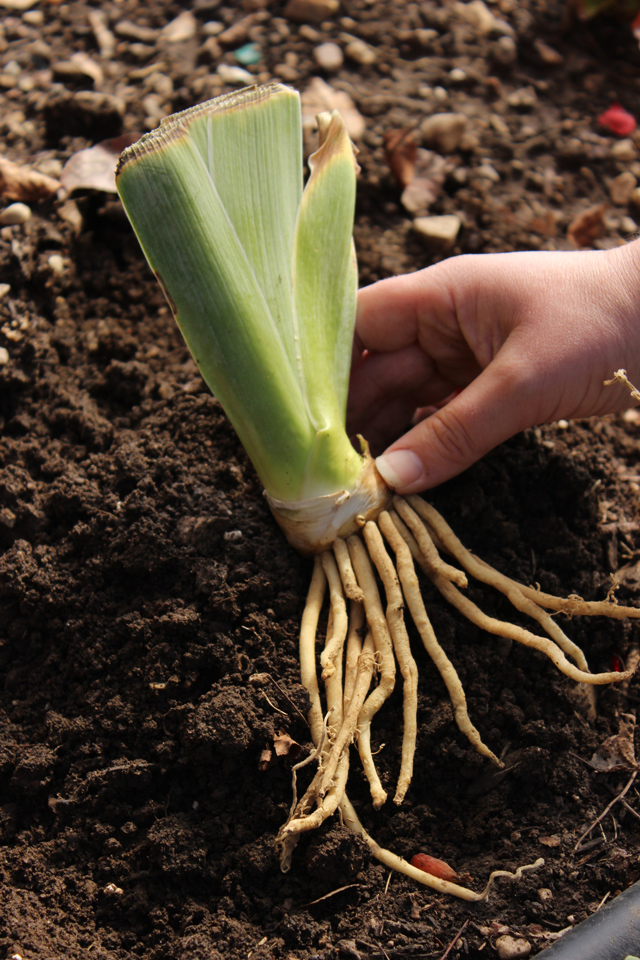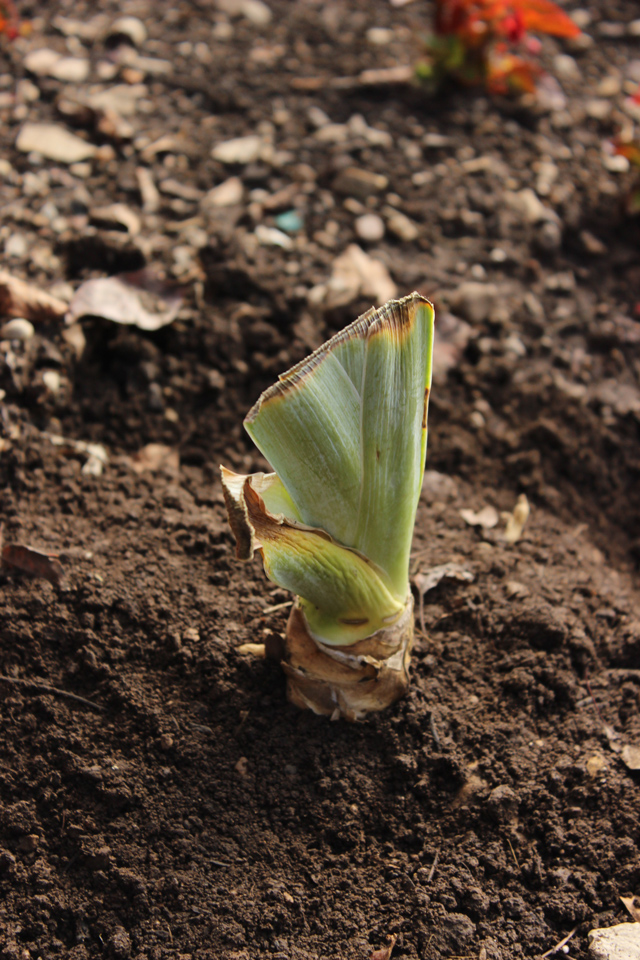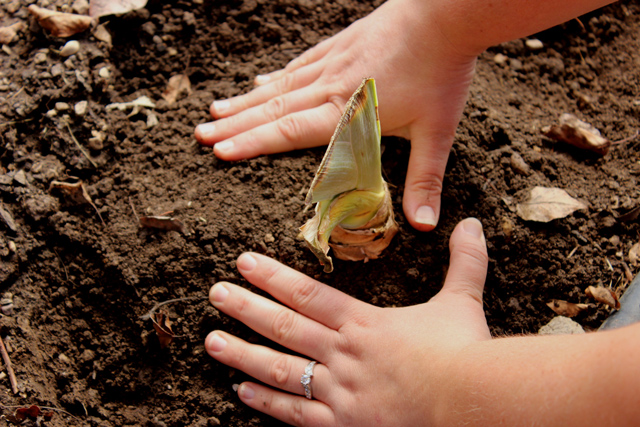Believe it or not, August has arrived. And as true as it is several weeks of summer remain. However, some gardener’s thoughts have started turning in more of a fall direction. I could hardly believe it when I realized Holland Bulb Farms would be getting their bearded iris inventory within the next week. Being the first of the fall bulbs to show up on their docks, the arrival of bearded iris rhizomes marks the beginning of the fall planting season. But you may wonder why Holland Bulb Farms receives bearded irises from their supplier so early? Continue reading to answer this question.
Bearded Iris Harvest, Planting, and Care Tips
Harvesting Bearded Iris
Bearded Iris rhizomes are harvested in July. In mid-summer, the plant is still green and gathering energy for next season’s blooms but the flowering process has long since finished. The foliage is cut down within a few inches of the rhizomes at this time. The entire root system and the remaining foliage dries out for harvesting. Therefore, the short “fan” of foliage will soon be brown and dead. This is a normal and natural process as the rhizome enters its dormant state and water escapes from the leaves. 
After harvest during the fall planting months, the leaves will lose more moisture and become a shade of tan to brown. This is part of the process, as the leaves are from the previous season and have no bearing on the health of the plant for the next season. As long as the rhizome is firm and intact the bearded iris rhizome is healthy and ready for planting.
Bearded Iris Planting Time
Bearded irises are one of the few fall-planted bulbs that require a firm root establishment before the onset of frost. Therefore, plant bearded iris 4-6 weeks before the ground freezes. If you’re unsure of when this will be in your area, err on the side of caution and plant early. There really isn’t such a thing as a “too established” plant. The months of August and September are ideal planting time for bearded iris. For this reason bulb companies will ship orders containing only bearded iris early in the fall or late summer. In fact, Holland Bulb Farms is planning on beginning to ship all orders of this nature by the end of next week already!
Planting Location and Technique for Bearded Iris
Bearded Iris benefit from large amounts of sun, as well as a relatively dry root system. Therefore, you will want to choose a planting location that receives at least 6 hours of sun per day. Iris planted in less than this may result in a lack of blooms. The soil must be well-drained. If your soil tends to be clay-like at all or retain moisture for long periods, amend it by mixing in a fair amount of peat moss and compost manure. An excess of moisture will cause rhizomes to rot. This can make it impossible for them to put down adequate root systems and grow to their full maturity.
Place the rhizome with the “fans” sticking up out of the soil and with the roots spread downward. Gently cover the rhizome with a thin layer of soil so that it is just covered. Planting too deep will result in excess moisture which is extremely detrimental to the overall health and success of the plant. Provide a light watering so that the soil is evenly moist, but not wet.
How to Plant Bearded Iris

The “fans” of the previous spring’s growth will most likely be dried and beginning to brown when the rhizomes arrive — this is completely normal as this growth will slowly fade away to make room for new growth next spring.

Hold the rhizome at a depth just below the soil surface, standing as upright as possible with the roots splayed out in all directions, pointing slightly downward.

Cover the roots with just a thin layer of soil and lightly pack it down around the base of the rhizome so that it continues to remain upright with “fans” pointing towards the sky

Once the rhizome is in place and the hole has been backfilled, offer a light watering and let the roots do their thing!
After Bloom Care for Bearded Iris
It is best to wait until after the plant is done blooming to fertilize. This helps the plant to produce food for the rhizome so that next season’s display will be even bigger and better! If you are growing a re-blooming iris, fertilize after the second bloom has faded. Allow the foliage to complete its process, in which it will turn brown and dry by the time fall arrives. Once this has occurred, cut the foliage down within 4-6″ of the soil surface to rest for next spring. If desired, fertilizer can be applied once more in early spring, when growth first starts to appear.
I always have mixed feelings about the summer season coming to an end and welcoming in the fall months. Having these beauties to select and plant makes it all the more bearable! As I mentioned above, most companies begin shipping their rhizomes very soon so time is of the essence!
Inspired to Plant Bearded Iris? Check Out MORE Helpful Articles on Bearded Iris:
Bearded Iris Companion Plants: 7 Combinations for Color and Balance
Late Spring Iris and Allium Garden (Includes FREE Garden Plan)


